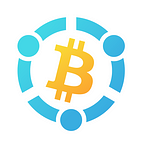In the blockchain world, most operations happen on the native network (aka the mainnet), which is an independently-running blockchain network with extensive community recognition. Participants may conduct transactions, deploy smart contracts, and mine cryptos on the mainnet, which creates practical value for its coin.
However, the mainnet alone is often insufficient because it requires constant maintenance and upgrading to bring improved user experiences. Meanwhile, it is extremely risky to start developing projects on the mainnet, which easily results in coin losses where there is a bug. In extreme cases, such bugs could even affect the normal operation of the entire mainnet. As such, public chains would often build another network, or the testnet as known, that copies the mainnet. Such networks function as computer-built simulation environments where developers can run simulation tests.
In the case of Ethereum, before the mainnet upgrade can be launched, community developers first have to conduct simulation tests on testnets. Following the Sepolia merge, Ethereum testnets that have been upgraded prior to the official mainnet merge now include Kiln, Ropsten, and Sepolia.
Many of you might wonder: Why does Ethereum need so many testnets? How do they differ? Today, let’s check out the public Ethereum testnets and how we can get test coins from ETH faucets.
I. Olympic (PoW)
The first-ever public Ethereum test network was called Olympic and was released in early 2015 before the official launch of the Ethereum mainnet. The testnet was primarily used to test the limits of the Ethereum operating environment when the network faces massive transactions. As the Ethereum mainnet went live, Olympic was officially abandoned in July 2015.
II. Morden (PoW)
After Olympic was discontinued, a new testnet was needed to help the mainnet run better, which triggered the birth of Morden in July 2015. The testnet was mainly used to test for junk data and certain basic issues between Geth and Parity, the two main Ethereum clients. After it was live for over a year, Morden was also discontinued due to the impact of the difficulty bomb.
III. Ropsten (PoW to PoS)
To solve the difficulty bomb problem that discontinued Morden, Ethereum developed another testnet called Ropsten, which is still running to this day. Back in 2017, Ropsten suffered a major attack. The attacker sent tens of millions of spam transactions and gradually raised the gas limit from 4,700,000 (the normal figure) to 90,000,000,000. People had no idea why the attacker hacked a worthless testnet, as the test coins had no real value. Some say that he did it purely out of curiosity and for fun.
On June 21, the Ethereum Foundation announced the discontinuation of a list of testnets, including Ropsten. The testnet is expected to stop running in Q4 2022. Two months ago, users could still get test coins from the Ropsten Faucet. Now, although we can still open the webpage, test coins are no longer available.
IV. Kovan (PoA)
Following the Ropsten attack in 2017, Ethereum started to adopt multiple testnets in parallel to reduce the losses after a possible attack. As such, Parity, Ethereum’s wallet team, created a new testnet called Kovan. Unlike testnets mentioned above, Kovan uses PoA to enable enhanced security. This consensus mechanism makes the testnet safer by maintaining a small group of trusted signers and validators at the expense of decentralization. Today, Kovan remains live and has become the favorite testnet of many developer teams in the Ethereum community.
- Faucet link: https://app.mycrypto.com/faucet
V. Rinkeby
Rinkeby, a testnet provided by Ethereum, also uses PoA. However, unlike Kovan, the Ethereum team has provided Rinkeby’s PoA documentation. In theory, any Ethereum wallet can support the Rinkeby testnet based on this documentation.
Rinkeby is still running, but it will be discontinued in Q2 or Q3 2023, according to the official news released in June.
- Faucet link: https://faucet.rinkeby.io/
VI. Goerli
Goerli, launched in 2018, is also one of the major testnets for the 2.0 upgrade. According to the developer roadmap, the Ethereum mainnet will soon merge into PoS if the Goerli merge is successful.
- Faucet link: https://goerli-faucet.mudit.blog/
VII. Kiln
As a public testnet released by the Ethereum Foundation this March, Kiln resembles the Ethereum mainnet. Its execution layer, which uses PoW, is launched in parallel with the beacon chain, which runs the PoS mechanism. At the moment, Kiln has fully shifted to PoS. Also included in the discontinuation list announced in June, the testnet will be closed soon after the Ethereum mainnet transitions to PoS.
- Faucet link: https://faucet.kiln.themerge.dev/
VIII. Sepolia
Sepolia is the testnet that merged into PoS and started its trial operation after Ropsten. Launched in October 2021, the testnet has completed its merge. Sepolia and Goerli are both critical as they will serve as testnets for the deployment of Ethereum DApps in the future.
Ethereum now boasts multiple available testnets, and no one can tell which one is the best. This is the case because “being the best testnet” is a false notion, and different testnets suit different developers. Each testnet remains irreplaceable until a new testnet goes live. For developers, the choice of Ethereum testnets for contract deployment mainly depends on the functions they wish to test.
